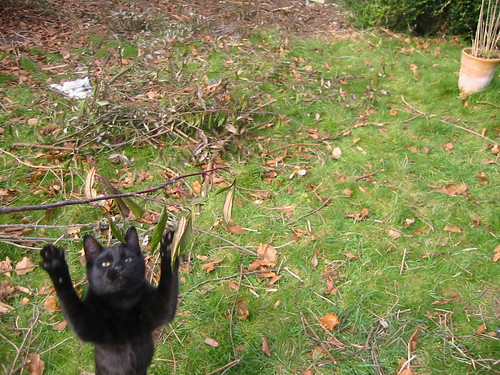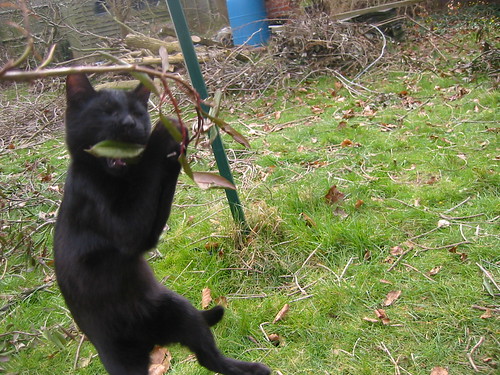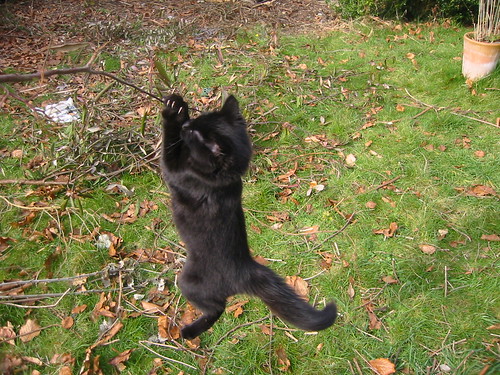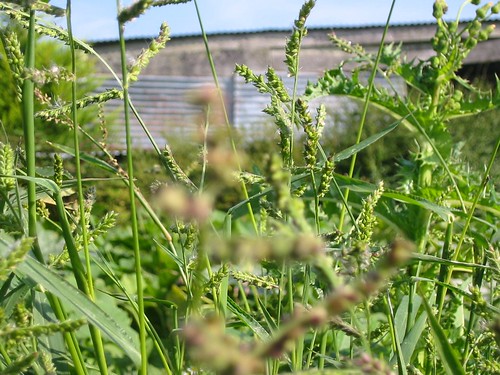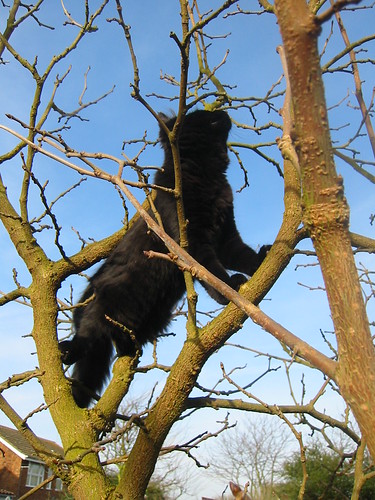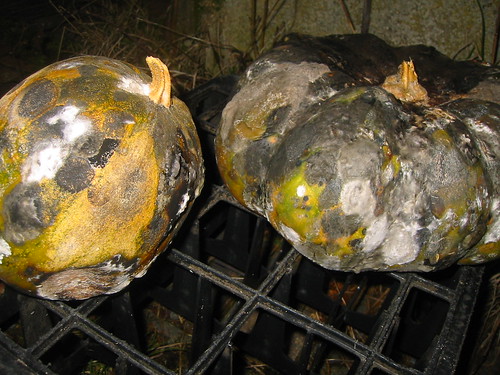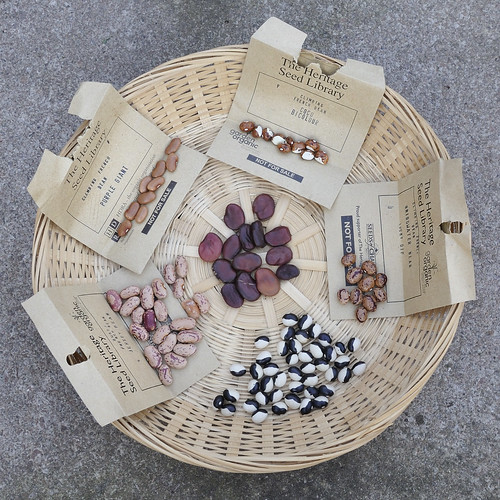Cordula sent a different colour of ulluco, white with pink streaks; these tubers seem more rounded than the elongated ones I've been growing from Realseeds.

She also sent me some Anredera cordifolia also known as Madeira Vine. This is actually related to the Ullucos and is a strong growing, frost tender vine which produces edible leaves and tubers.
And then, in addition to the Sorghum seed I had asked for she sent two tiny tubers of a potato she describes as blaue Neuseelaender. I'm not very bright at German and it's taken me a couple of weeks to realise this translates as New Zealand blue. There isn't such a variety listed for New Zealand but there is a likely candidate in Urenika or its synonym Tutai Kuri, a very ancient variety grown by the Māori and, at least by some, alleged to have been in cultivation there for 1000 years after Peruvian whalers dropped them off in ancient times. The potato actually looks very similar to Vitelotte and it will be interesting to grow them together this year for comparison.
Mybighair (yes, I do have a real name but don't know if it's in the public domain) sent me some seeds for Lathyrus Tuberosus. As I said before I'd never heard of this but now know a little more. Two of the seeds have germinated and are growing away quite nicely so I hope to be able to document them and maybe even taste them over the next year or two.
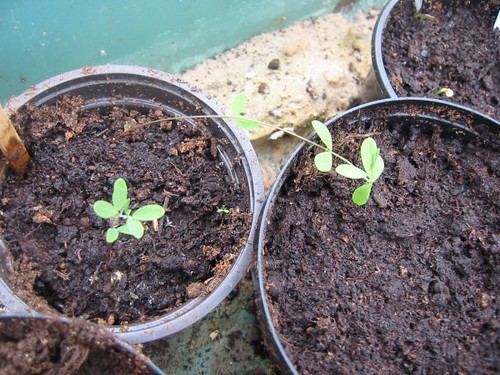
This same kind swapper also sent me a section of perennial onion, Allium cepa perutile, to help me get started again. I lost my original stocks in a forced house move some years ago.
Derek has sent me some tubers of Apios Americana, also known as the American ground nut although it is nothing like peanuts which are also known as ground nuts. The plant forms strings of starchy edible tubers and is in addition an attractive and vigorous climber that will reach a height of 3 metres in a good year. This plant is associated with the Mayflower settlers of 1620 and is supposed to have contributed usefully to their meagre diet in the first years of settlement.
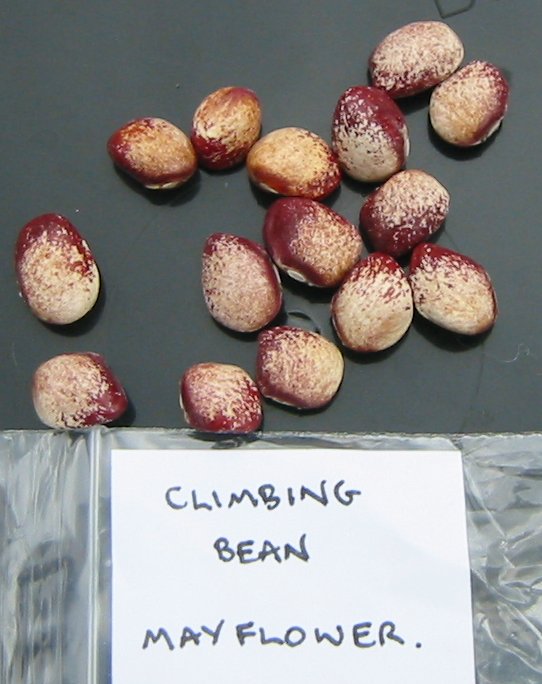
With the Apios Derek also sent some Mayflower beans, climbing french beans which tradition would have us believe came over to America on the Mayflower itself. This is almost certainly bollocks. Climbing french beans of this type had barely reached Europe at the time of the Mayflower and were in no way a common enough a foodstuff to be taken as part of the essential provisions for the journey. This is supported by various 'settler's lists' of the time which mention meal and peas but nothing of beans. On the other hand native Americans all over the northern continent were growing varieties of beans with their other crops. I think these beans were possibly a local variety taken or traded for from the Indians in the area although the truth will probably never be known. Leaving all this aside, the beans are incredibly pretty, primitive looking and squarish in shape with delicate pink mottles and streaks over a grey-cream ground. I'm looking forward to growing them.
Tristan has sent me an enormous quantity of Elephant garlic (Allium ampeloprasum) for which I'm really grateful as it will give me a great head start on building up stocks of my own. The Elephant garlic is more closely related to the leeks than true garlic (Allium sativum) and actually not that far removed from Babington's leek which I already have. The taste is mild compared to the ordinary sort but the large bulbs offer opportunities for gently flavoured impressive garnishes and easier pickling.
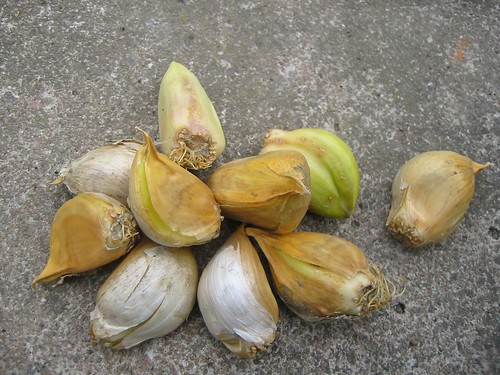
So this year's swapping has been a resounding success and I repeat my thanks to everyone for their generosity. I'm not sure what I'll have to offer next year but I'm happily anticipating making new contacts and learning about new plants from them. I hope anyone reading who hasn't tried it yet will give swapping a go for themselves too as it's very rewarding.






